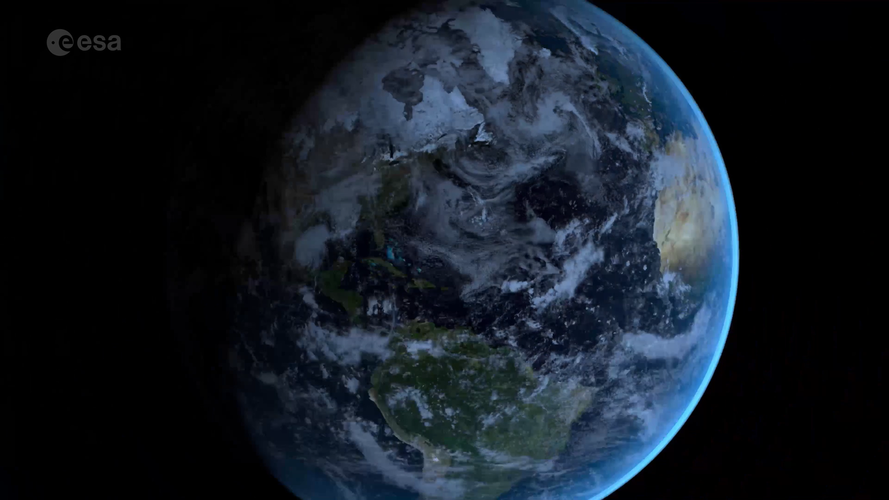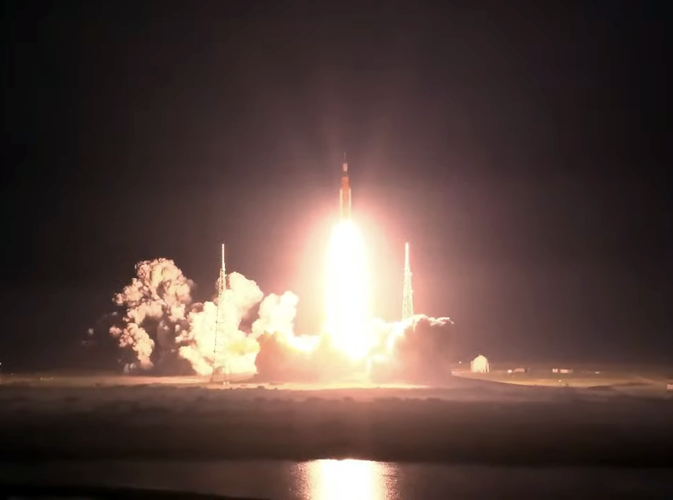
Copernical Team
Webb catches fiery hourglass as new star forms

The NASA/ESA/CSA James Webb Space Telescope has revealed the once-hidden features of the protostar within the dark cloud L1527 with its Near Infrared Camera (NIRCam), providing insight into the formation of a new star. These blazing clouds within the Taurus star-forming region are only visible in infrared light, making it an ideal target for Webb.
ESA sets sights on space transportation ecosystem

Economic activity on Earth relies on a large logistics infrastructure – everything we buy and consume, and every trip we make, depends on a global transportation network connecting trucks, ships, aircraft, warehouses supported by fuel systems, maintenance services and communications. The same will be soon true in space – so ESA intends to connect Earth orbit and even the Moon and Mars with in-space transportation.
To set in motion the development of a comprehensive space logistics capability, ESA has asked European industry for proposals for in-orbit transportation demonstration missions. The objective will be to set up an efficient in-space system which would
Sentinel-5P data used in new methane detection system

As part of worldwide efforts to slow climate change, the United Nations has revealed a new satellite-based system to detect methane emissions. The Methane Alert and Response System (MARS) initiative, launched at COP27, will scale up global efforts to detect and act on major emissions sources and accelerate the implementation of the Global Methane Pledge.
The Sentinel-5P satellite, the first Copernicus mission dedicated to monitoring our atmosphere, will be crucial in implementing this ambitious initiative.
Pushing the boundaries of space
 Video:
00:02:02
Video:
00:02:02
Space is delivering more accurate, more precise and more varied data than ever before. State-of-the-art digital technologies, such as Digital Twins of Earth and High Performance Computing, are enabling faster and more complex calculations, allowing us to replicate the Earth system, its climate and life on our planet.
ESA is exploiting digital technologies and artificial intelligence, supporting scientists and industry to respond to global challenges such as the climate crisis and designing innovative solutions for our future.
ESA’s Council at Ministerial level, CM22, taking place next week is a time for critical decisions. Space supports scientists, policymakers
Forward to the Moon: lunar mission Artemis I begins

L3Harris infrared weather forecasting technology launches on NOAA satellite
 L3Harris Technologies (NYSE:LHX) reports that its Cross-Track Infrared Sounder (CrIS), designed to enhance severe weather detection capabilities, was successfully launched aboard NOAA's Joint Polar Satellite System-2 weather satellite.
As one of the world's most advanced hyperspectral sounders and a key sensor on the JPSS-2 satellite, the CrIS instrument has over 2,000 infrared channels -
L3Harris Technologies (NYSE:LHX) reports that its Cross-Track Infrared Sounder (CrIS), designed to enhance severe weather detection capabilities, was successfully launched aboard NOAA's Joint Polar Satellite System-2 weather satellite.
As one of the world's most advanced hyperspectral sounders and a key sensor on the JPSS-2 satellite, the CrIS instrument has over 2,000 infrared channels - Synthetic hibernation could provide protection from cosmic radiation
 It is still a glimpse into the future: Astronauts could be put into artificial hibernation and in this state be better protected from cosmic radiation. At present, there are already promising approaches to follow up such considerations. An international research team led by the Biophysics Department of the GSI Helmholtzzentrum in Darmstadt now has found decisive indications of the possible benef
It is still a glimpse into the future: Astronauts could be put into artificial hibernation and in this state be better protected from cosmic radiation. At present, there are already promising approaches to follow up such considerations. An international research team led by the Biophysics Department of the GSI Helmholtzzentrum in Darmstadt now has found decisive indications of the possible benef Calnetix Technologies' high-speed blower system delivered to ISS
 Calnetix Technologies reports that NASA has completed ground testing of its new carbon dioxide (CO2) removal system and has successfully launched the high-speed blower system to the International Space Station (ISS). The CO2 removal system includes Calnetix's magnetically levitated in-line blower and a dual controller.
"The completion of NASA's rigorous qualification testing is an importan
Calnetix Technologies reports that NASA has completed ground testing of its new carbon dioxide (CO2) removal system and has successfully launched the high-speed blower system to the International Space Station (ISS). The CO2 removal system includes Calnetix's magnetically levitated in-line blower and a dual controller.
"The completion of NASA's rigorous qualification testing is an importan Space Technologies offer opportunity to achieve one-sixth of emissions cuts needed to reach net zero by 2050
 Satellite technologies are already reducing carbon emissions by 1.5 billion tonnes (or 1.5 gigatons) every year, according to independent research commissioned by Inmarsat from leading consultants at Globant's Sustainable Business Studio. This is equivalent to almost a third of the entire United States' carbon emissions in 2021, or the lifetime emissions of 50 million cars.
Demonstrating t
Satellite technologies are already reducing carbon emissions by 1.5 billion tonnes (or 1.5 gigatons) every year, according to independent research commissioned by Inmarsat from leading consultants at Globant's Sustainable Business Studio. This is equivalent to almost a third of the entire United States' carbon emissions in 2021, or the lifetime emissions of 50 million cars.
Demonstrating t Planet and Justdiggit enable nature-based solutions to regreen the land
 Planet Labs PBC (NYSE: PL), a leading provider of daily data and insights about Earth, today shared that Justdiggit, a Dutch non-profit organization dedicated to supporting land restoration in sub-Saharan Africa, is leveraging Planet's high-resolution SkySat satellite tasking capabilities, their near-daily PlanetScope satellite imagery, and the Planetary Variables data feeds to quantify, evaluat
Planet Labs PBC (NYSE: PL), a leading provider of daily data and insights about Earth, today shared that Justdiggit, a Dutch non-profit organization dedicated to supporting land restoration in sub-Saharan Africa, is leveraging Planet's high-resolution SkySat satellite tasking capabilities, their near-daily PlanetScope satellite imagery, and the Planetary Variables data feeds to quantify, evaluat 
